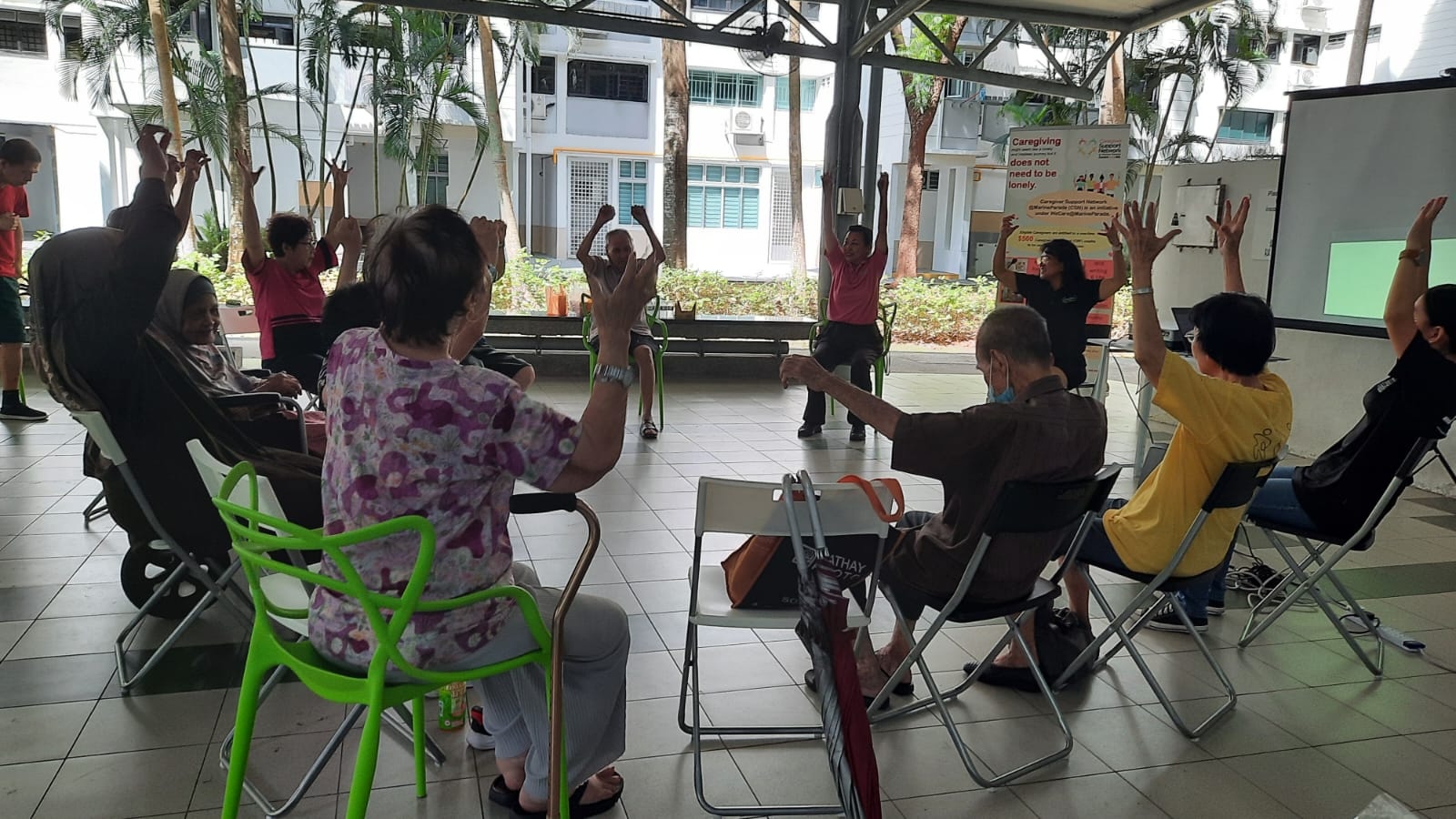Magnetic pulse therapy strengthens muscles and prevents frailty, especially for elderly

Published on
23 May 2023
Published by
The Straits Times
SINGAPORE – Mrs Yvette Cheak, 73, could not stand for long periods of time after suffering four or five falls in a few years which left her right leg weak and knee swollen.
In 2021, a friend with similar leg issues recommended that she try a painless therapy: two years earlier, researchers at the National University of Singapore (NUS) had invented a medical device that sends magnetic pulses through the leg to strengthen muscles without the need for her to exercise.
Every week over three months, Mrs Cheak had a session with the Bixeps device, placing her leg inside it for 10 minutes each time.
After just six weeks of therapy, Mrs Cheak noticed that the swelling had gone down and the pain in her leg had subsided.
“I could stand up for longer periods and walk better. I can now do daily morning walks for 45 minutes and also have the strength to carry my grandson,” said the retired compliance officer. She has completed three cycles of the three-month therapy to maintain her limb strength, and is now on her fourth cycle.
Explaining how Bixeps (pronounced “biceps”) works, Associate Professor Alfredo Franco-Obregon, principal investigator with the NUS Institute for Health Innovation and Technology (iHealthtech), said the magnetic pulses activate a structure in the muscle cells, called the mitochondria, which produces energy. This then triggers a metabolic response in the cells and releases factors called myokines that appear during exercise, he added. Myokines aid the regeneration of muscles.
Mrs Cheak was among more than 100 patients aged between 38 and 91 who participated in a clinical trial between 2020 and 2022. The trial results showed that the machine helped to prevent frailty and make muscles stronger, especially for the elderly. The average age of the participants was 68.
More than 70 per cent of the participants saw healthy changes in their bodies. Their skeletal muscle mass rose by an average of 1.2 per cent.
“(Bixeps showed) very positive effects in the elderly, and they are the ones who need this technology the most. They are the ones who are less likely to exercise... and they tend to enter this vicious circle of losing more muscle and becoming more frail,” said Prof Franco-Obregon.
People over the age of 40 usually start to lose skeletal muscle mass by 0.8 per cent each year.
In addition to gaining skeletal muscle mass, the 2020-2022 trial participants also lost about 4 per cent of both total body fat and visceral fat, an insidious type of fat that wraps around the abdominal organs deep inside the body, and raises the risk of diabetes, heart disease and stroke.
While the magnetic pulses target the limbs, the therapy improves the metabolism of the entire body since the factors are released into the bloodstream, noted Prof Franco-Obregon.
About 85 per cent of the participants reported improvements in their mobility.
The trial was led by Prof Franco-Obregon and was carried out jointly by researchers from iHealthtech, the NUS spin-off QuantumTX, and the Healthy Longevity Translational Research Programme under the NUS Yong Loo Lin School of Medicine.
Each session currently costs about $50. The session is limited to 10 minutes to avoid over-stimulating the mitochondria, said Prof Franco-Obregon. A doctor’s referral is not needed for the therapy sessions, which are held at QuantumTX’s office in Alexandra Hospital and 10 partner centres islandwide. More information about the therapy can be found on www.bixeps.com
Mrs Cheak said she was initially sceptical of the therapy.
“I was thinking, ‘I’m putting my leg in there and I don’t feel a thing.’ But after a few sessions, the pain wasn’t bad and my muscles felt more relaxed.”
The Bixeps machine is used on alternate legs each week. Between every three-month cycle, participants do not need to take a break.
Pregnant women and those who have active implants such as pacemakers and internal defibrillators are not eligible for the therapy.
In previous trials, Bixeps was tested on younger participants with sports injuries and patients who underwent knee surgery. The therapy helped to quicken the athletes’ rehabilitation and they could return to training sooner. One athlete estimated that he saved about 20 per cent of recovery time with the therapy.
But Prof Franco-Obregon reiterated that using the Bixeps machine is not a substitute for exercise. Rather, it is more of a solution for those who are unable to exercise and are losing muscle.
Studies have shown that people in South-east Asia develop diabetes at a lower body mass index than other demographics. They hold on to visceral fat more stubbornly than people in other parts of the world despite exercise.
Preliminary studies by the NUS team found that the therapy helped to control the average blood sugar level of some patients.
The research team is now conducting a clinical trial with the Singapore General Hospital to investigate how magnetic field therapies can manage the progression of diabetes.
Source: The Straits Times © SPH Media Limited. Reproduced with permission.
ALL views, content, information and/or materials expressed / presented by any third party apart from Council For Third Age, belong strictly to such third party. Any such third party views, content, information and/or materials provided herein are for convenience and/or general information purposes only. Council For Third Age shall not be responsible nor liable for any injury, loss or damage whatsoever arising directly or indirectly howsoever in connection with or as a result of any person accessing or acting on any such views, content, information and/or materials. Such third party views, content, information and/or materials do not imply and shall not be construed as a representation, warranty, endorsement and/or verification by Council For Third Age in respect of such views, content, information and/or materials.







